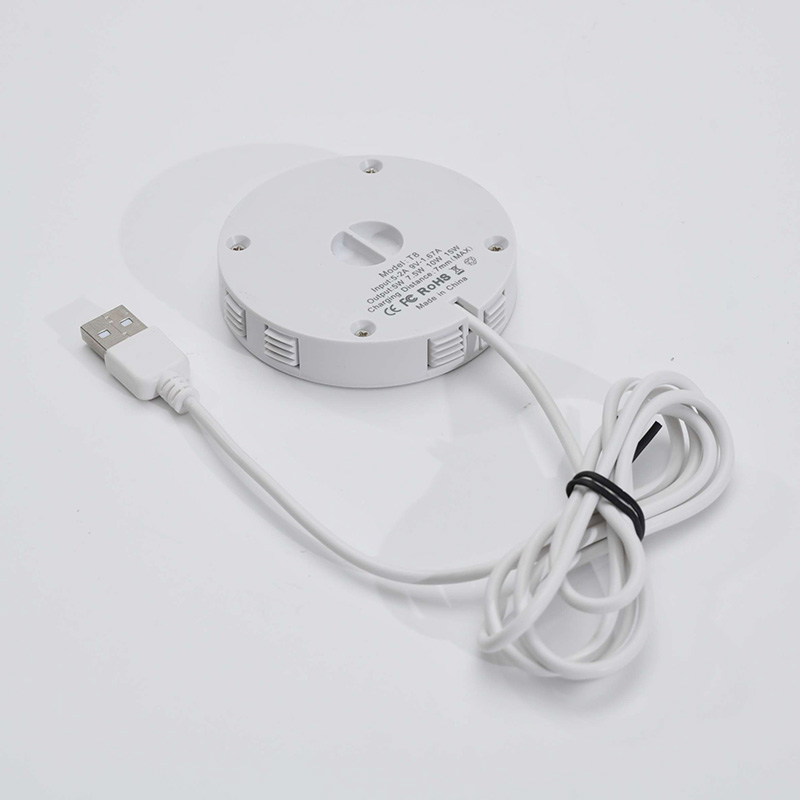Wireless Chargers primarily offer advantages in convenience, device protection, and scenario adaptability, making daily charging more hassle-free.

Let’s dive deeper into the advantages of wireless chargers, breaking down each benefit with practical scenarios and technical details to show their real value in daily use.
Convenience: Beyond "No Cables" – Details of Daily Ease
The core of convenience lies in solving small but frequent pain points of wired charging, which are often overlooked.
Instant charging without alignment stress: Most mainstream wireless chargers (especially those with a charging area larger than 5cm in diameter) do not require precise alignment of the device’s coil with the charger’s coil. You can place your phone casually on the pad, and the charging will start automatically. This is far more efficient than fumbling with a USB-C or Lightning cable in the dark (e.g., charging your phone on a nightstand before bed).
Multi-device charging with one base: A single wireless charging station (with 2-3 charging coils) can charge a phone, a pair of wireless earbuds, and a smartwatch at the same time. For example, when you get home from work, you can place all three devices on the station together, instead of looking for three separate charging cables and power sockets.
No cable entanglement or loss: Wireless chargers eliminate the problem of charging cables being tangled in bags or lost. You only need to carry a small wireless charging pad when traveling, instead of packing multiple cables (e.g., a phone cable, an earbud cable, and a watch cable).
Device Protection: Extend the "Lifespan" of Charging Ports
The charging port is one of the most vulnerable parts of electronic devices, and wireless charging directly avoids damage to it.
Reduce mechanical wear from plugging/unplugging: According to testing by electronic device maintenance platforms, a USB-C port can withstand about 10,000 plugging/unplugging cycles on average. If you charge your phone twice a day with a cable, the port may start to loosen or fail after 13 years. Wireless charging completely skips this process, keeping the port in its original state for a longer time.
Prevent port damage from external factors: Wired charging ports are prone to problems like dust accumulation (which causes poor contact) or liquid intrusion (which leads to short circuits). Wireless charging keeps the port closed (you don’t need to open the port cover of waterproof phones for charging), effectively isolating dust and water. For example, if you accidentally spill water on the wireless charger, the phone’s port won’t be affected.
Avoid "port mismatch" damage: Using non-original or low-quality wired chargers may cause damage to the port due to incorrect current or voltage. Wireless chargers that comply with the Qi standard have built-in communication protocols – they will first detect the device’s charging requirements (e.g., 5V/1A for earbuds, 9V/2A for phones) and adjust the output accordingly, avoiding overloading the port.
Scenario Adaptability: Integrate Charging into Daily Life
Wireless chargers can be embedded into various environments, turning "active charging" (consciously plugging in a cable) into "passive charging" (charging while using or placing the device).
Car scenarios: Safe and distraction-free: Wireless charging panels embedded in car central consoles allow you to charge your phone while using navigation. You don’t need to plug a cable into the phone (which may block the phone’s screen or cause the cable to get tangled in the steering wheel), improving driving safety.
Office scenarios: Charge while working: A stand-type Wireless Charger on your desk can hold your phone at a 60° angle. You can answer video calls, check messages, or view documents on the phone screen while it’s charging – this is impossible with a wired charger (the cable would restrict the phone’s placement angle).
Public scenarios: Seamless supplementary charging: Many public places (cafés, airports, and shopping malls) now have wireless charging modules built into tables or chairs. You can place your phone on the table to charge while drinking coffee or waiting, without asking the staff for a charging cable.
Compatibility: The "Qi Standard" Ensures Universal Use
The popularity of the Qi standard makes wireless chargers highly versatile, avoiding the "brand lock-in" problem of wired chargers.
Cross-brand and cross-device compatibility: The Qi standard is supported by almost all major electronics brands, including Apple, Samsung, Huawei, Xiaomi, and Google. For example, a Qi-certified wireless charger from Xiaomi can charge an iPhone 15, a Samsung Galaxy S24, and a Huawei Mate 60 Pro – you don’t need to buy a separate charger for each brand’s device.
Backward compatibility with old devices: Even if you upgrade your phone, an old Qi wireless charger can still be used for the new device. For example, a wireless charger bought for an iPhone 8 (released in 2017) can still charge an iPhone 15 (released in 2023) – unlike wired chargers, where you may need to switch from Lightning to USB-C cables when upgrading devices.
Clear certification for safe use: Qi-certified wireless chargers have passed strict testing (including electromagnetic radiation, temperature control, and foreign object detection). You can check the Qi logo on the charger or the product manual to ensure that it is compatible with your device and safe to use – this avoids the risk of buying "no-name" wired chargers that may damage devices.








